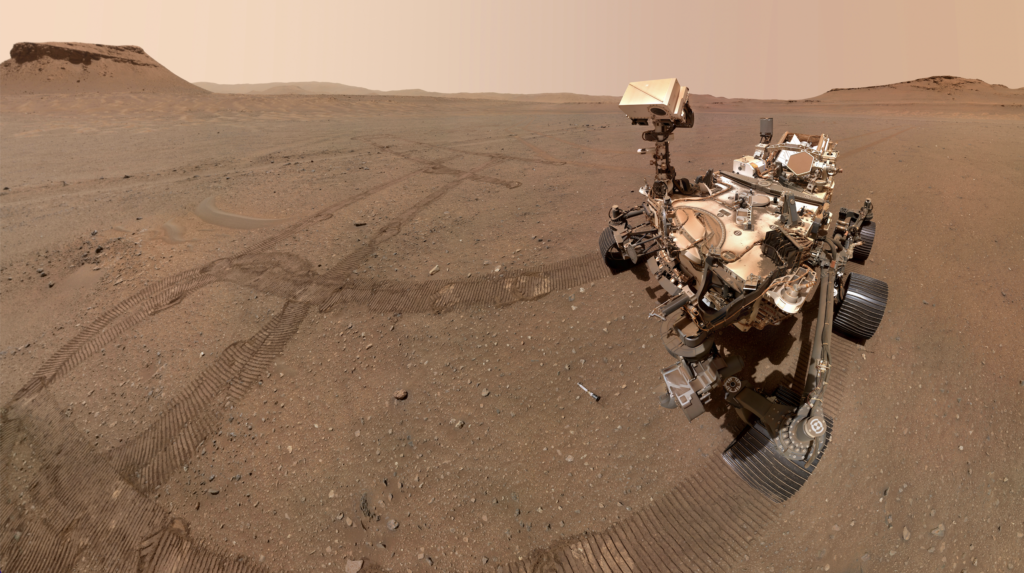In a saga spanning decades, NASA’s Mars Sample Return (MSR) mission, aimed at robotically retrieving samples from the Red Planet for detailed analysis on Earth, has encountered formidable challenges that threaten its very existence. The ambitious initiative, considered a “must-do” by planetary scientists, has been derailed by a combination of an unrealistic budget and an overly optimistic schedule.
The MSR program, meticulously crafted over the years, found itself in the eye of the storm when an independent review board (IRB) established by NASA issued a stark report last September. The IRB disclosed that the current iteration of MSR could cost between $8 billion and $11 billion, significantly surpassing the recommended budgetary limits. Moreover, the board highlighted a near-zero likelihood of critical MSR elements being ready for the planned launches in 2027 and 2028, casting a shadow over the subsequent “Earth return” projected for 2033.

At the heart of MSR’s financial and temporal tribulations lies its intricate architecture. The official plan involves a NASA-built lander housing a sample-return rocket, complemented by a robotic arm from the European Space Agency (ESA). The lander is set to touch down near the Perseverance rover, which has been diligently depositing curated samples in tubes during its explorations around Jezero Crater.
The proposed process envisions Perseverance collecting these samples and transferring them to the rocket, or potentially utilizing newly designed flying drones. The sample-packed rocket would then launch into Mars orbit, rendezvous with an ESA-supplied spacecraft, and eventually return to Earth, with samples plummeting to the Utah Test and Training Range for recovery and analysis.
The tumult triggered by the IRB report prompted NASA to hit the pause button on MSR. The space agency announced a “ramping back” of associated work, leading to a reduction in the MSR workforce. The Jet Propulsion Laboratory, tasked with managing MSR, imposed a hiring freeze and recently laid off 100 contractors.
Budgetary constraints intensified the turmoil, with Congress contemplating the project’s future. The House of Representatives proposed nearly $1 billion for MSR in 2024, aligning with NASA’s request, while the Senate suggested a mere $300 million and explicitly threatened cancellation unless costs are reined in.
To address the challenges, NASA established the Mars Sample Return Independent Review Board Response Team (MIRT), led by Sandra Connelly, the space agency’s deputy associate administrator for science. The MIRT is tasked with providing an update on the replanning process and progress in an upcoming “town hall” meeting. NASA has deferred confirming the official mission cost and schedule until after the completion of the MIRT review, expected in March 2024.
ESA remains steadfast in its commitment to MSR, working collaboratively with NASA on the replanning efforts. The agency emphasizes its dedication to fulfilling all commitments for a potential launch as early as 2028.

The perceived scientific value of MSR remains a central point of contention. Advocates argue that the initiative, crowned as the highest scientific priority by multiple planetary science decadal surveys, holds unparalleled astrobiological potential. However, skeptics, including planetary scientist Fran Bagenal, question the worthiness of spending billions on returning ancient Martian samples, suggesting alternative investments in more affordable robotic, in situ studies on Mars and other celestial bodies.
Former NASA director Scott Hubbard proposes a comprehensive approach, making MSR an “all-of-NASA initiative” aligned with the agency’s broader human exploration plans. This could potentially streamline the mission, reducing complexity and aligning with the capabilities of NASA’s Space Launch System.
As the fate of MSR hangs in the balance, awaiting the MIRT’s conclusions, the turmoil serves as a poignant reminder of the intricate dance between scientific ambition, budgetary constraints, and the ever-evolving landscape of space exploration. The ultimate question lingers: will MSR overcome these challenges and pave the way for groundbreaking discoveries, or will it succumb to the harsh realities of budgetary limitations? Only time, and NASA’s strategic decisions, will unveil the answers to this celestial conundrum.






